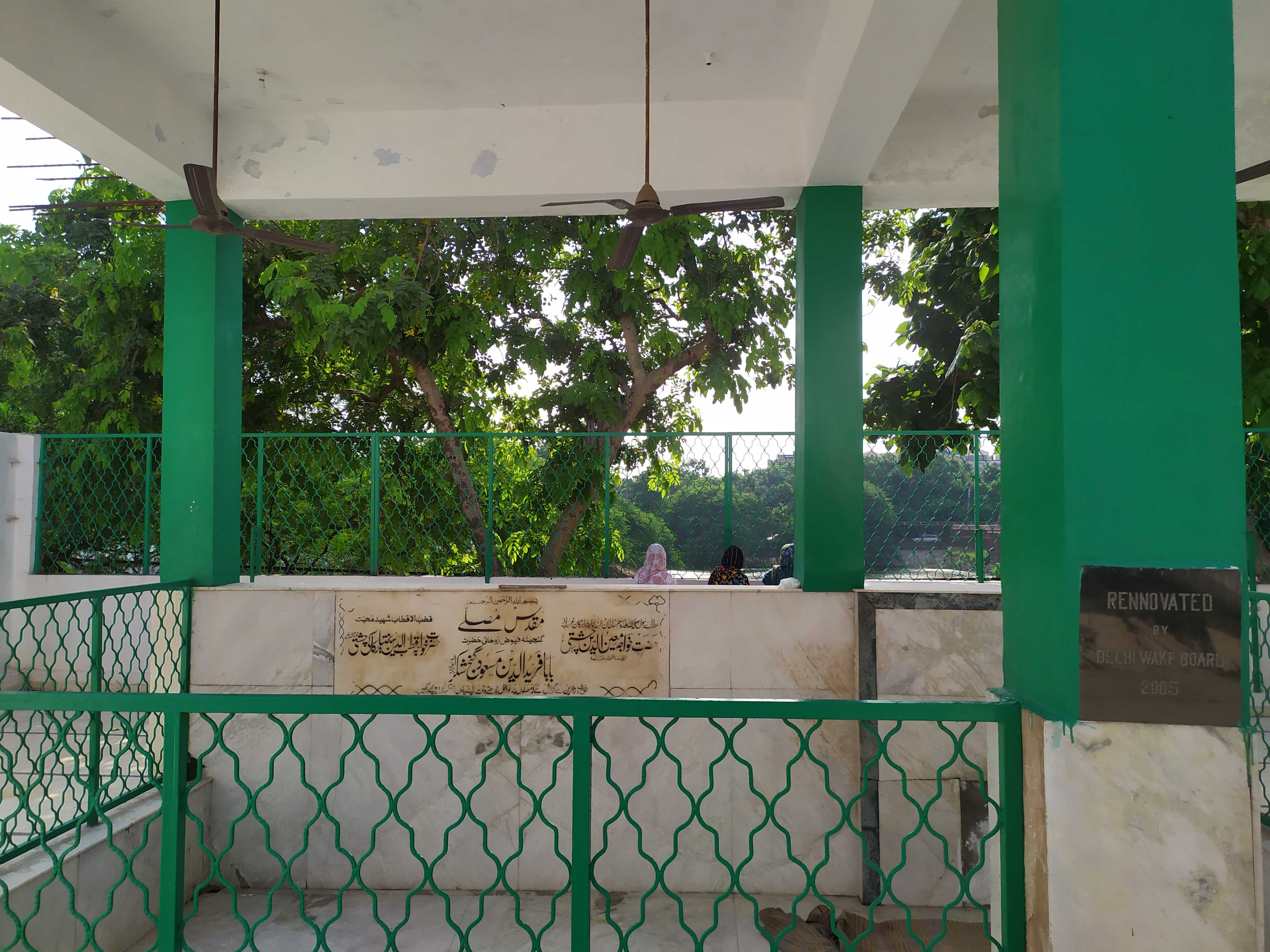
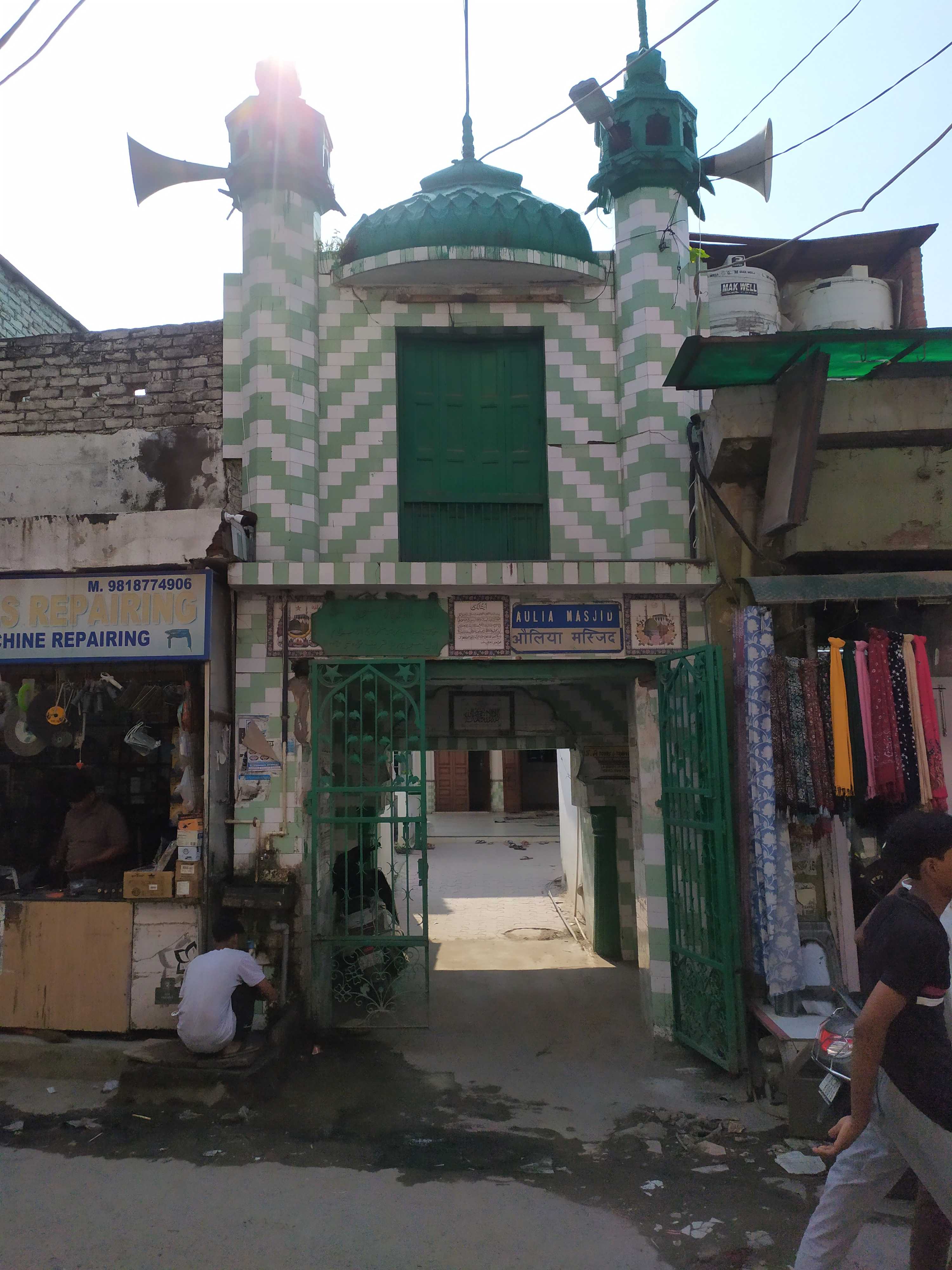
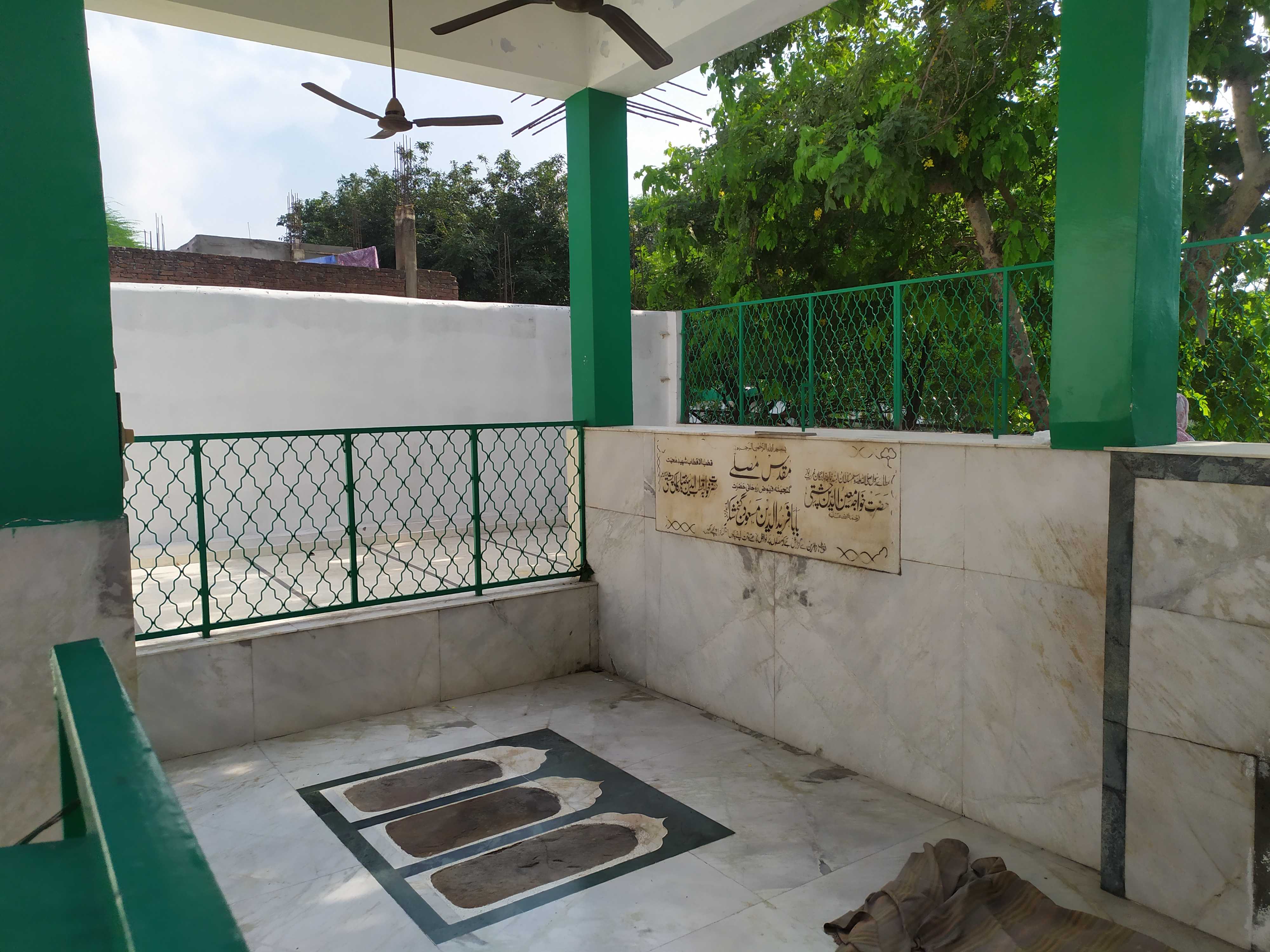
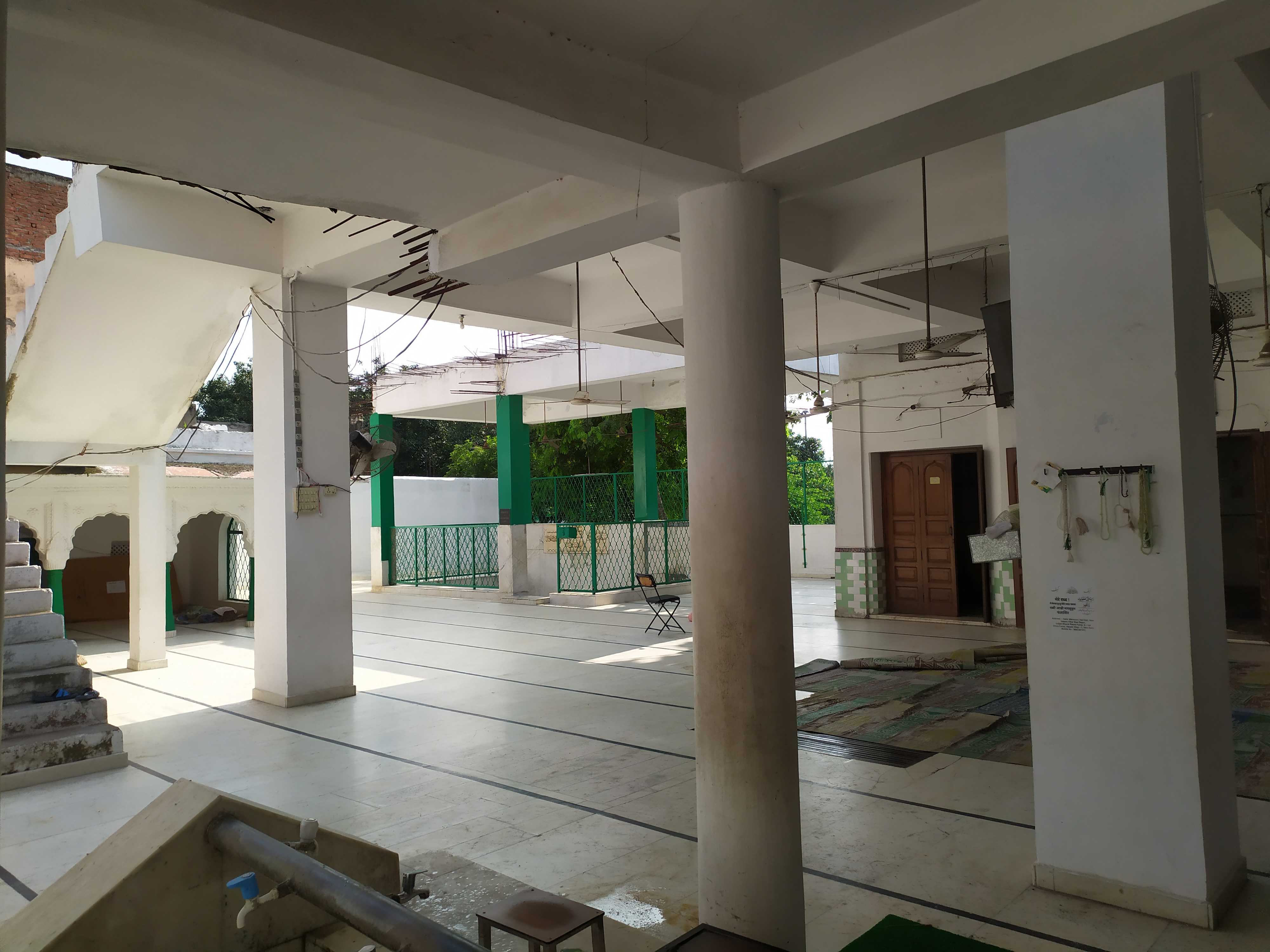
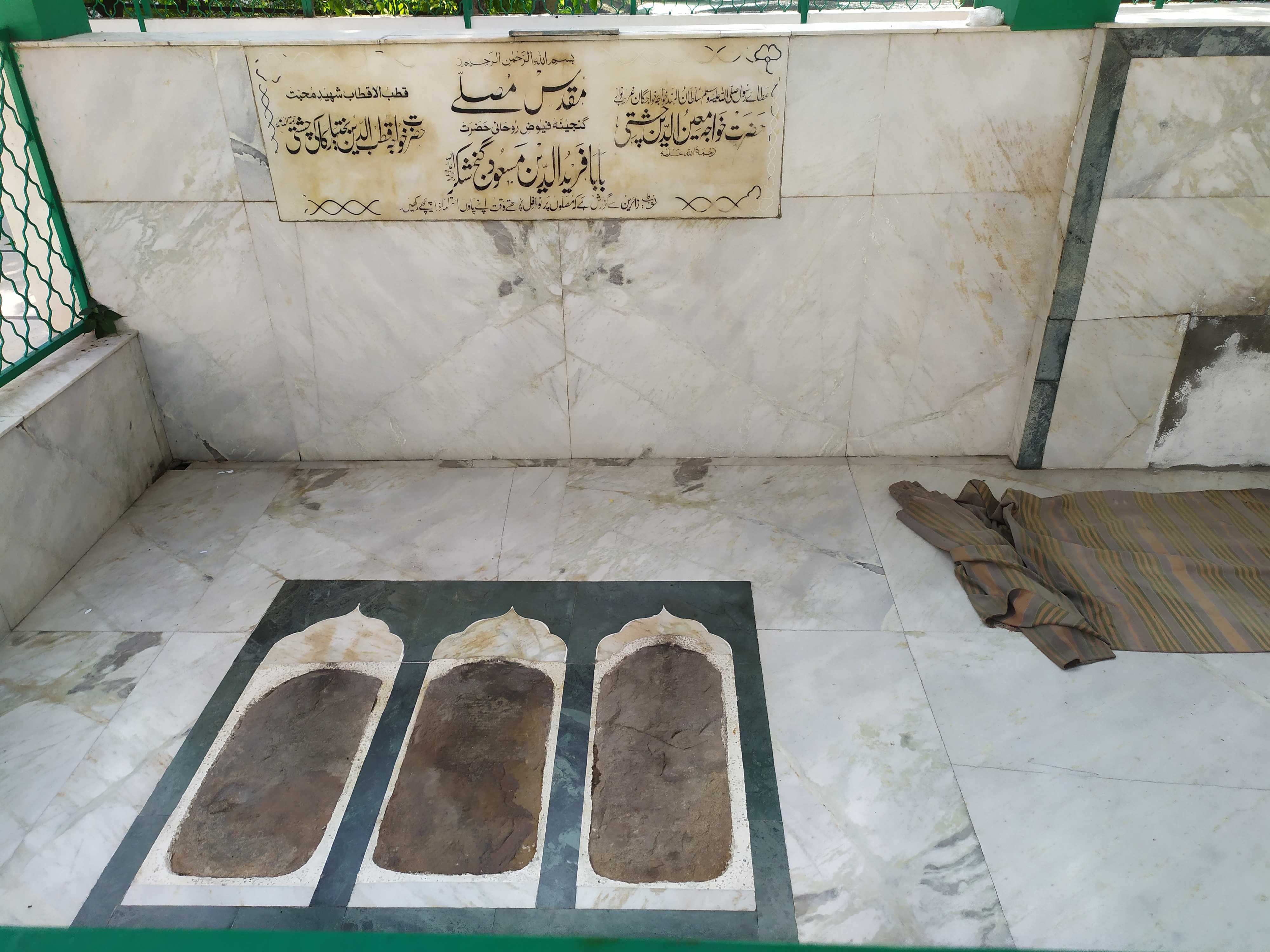
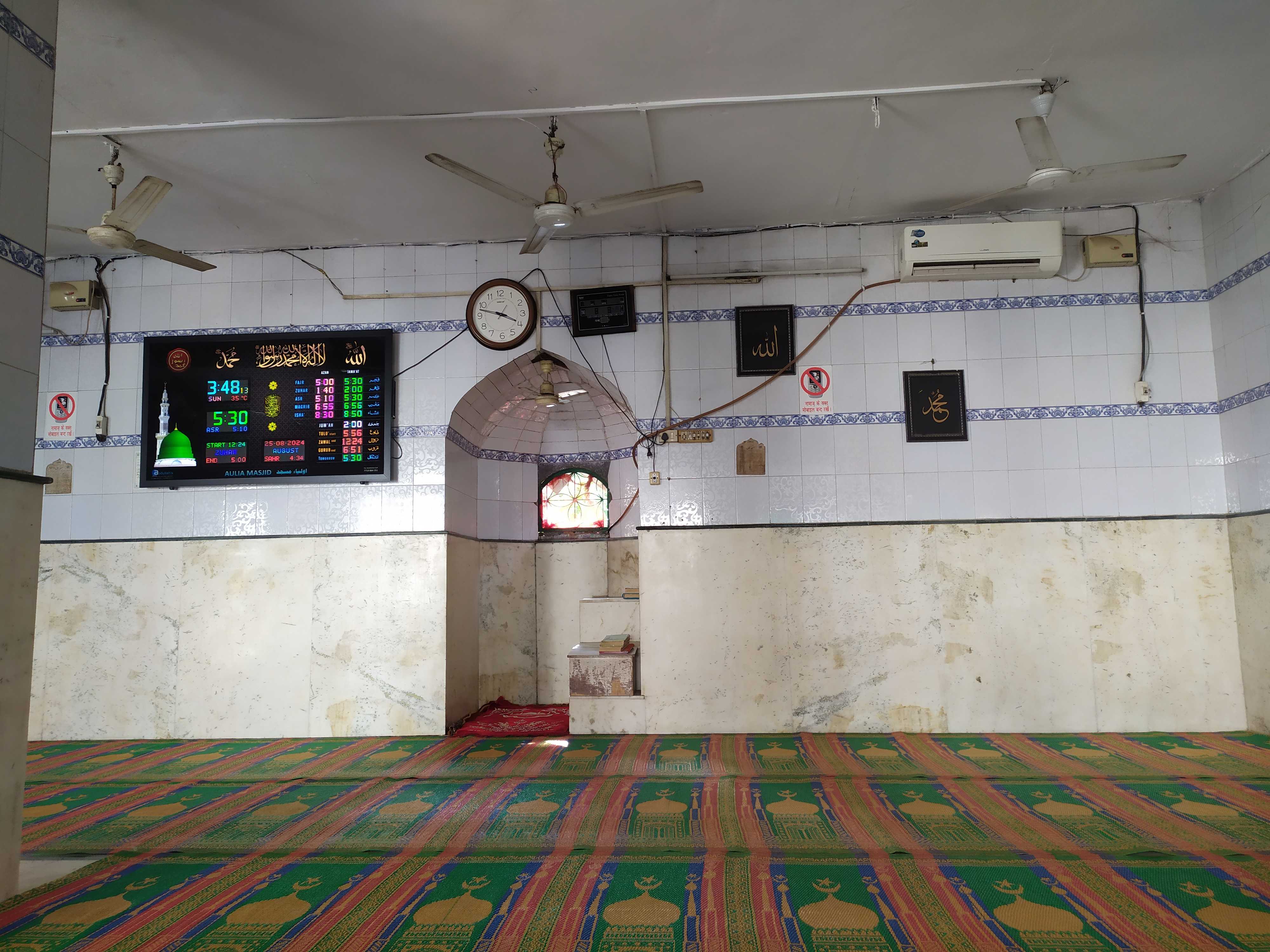
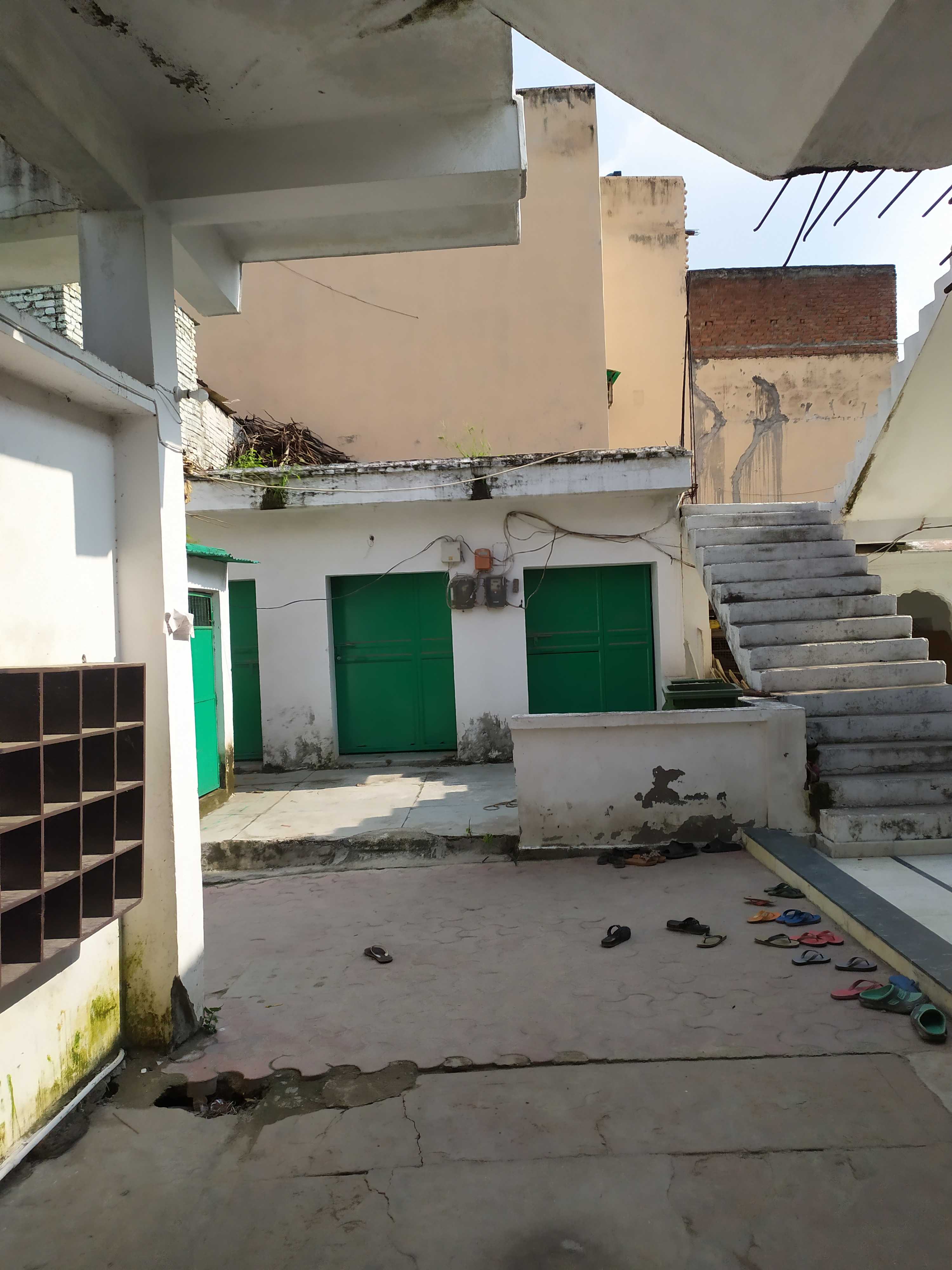
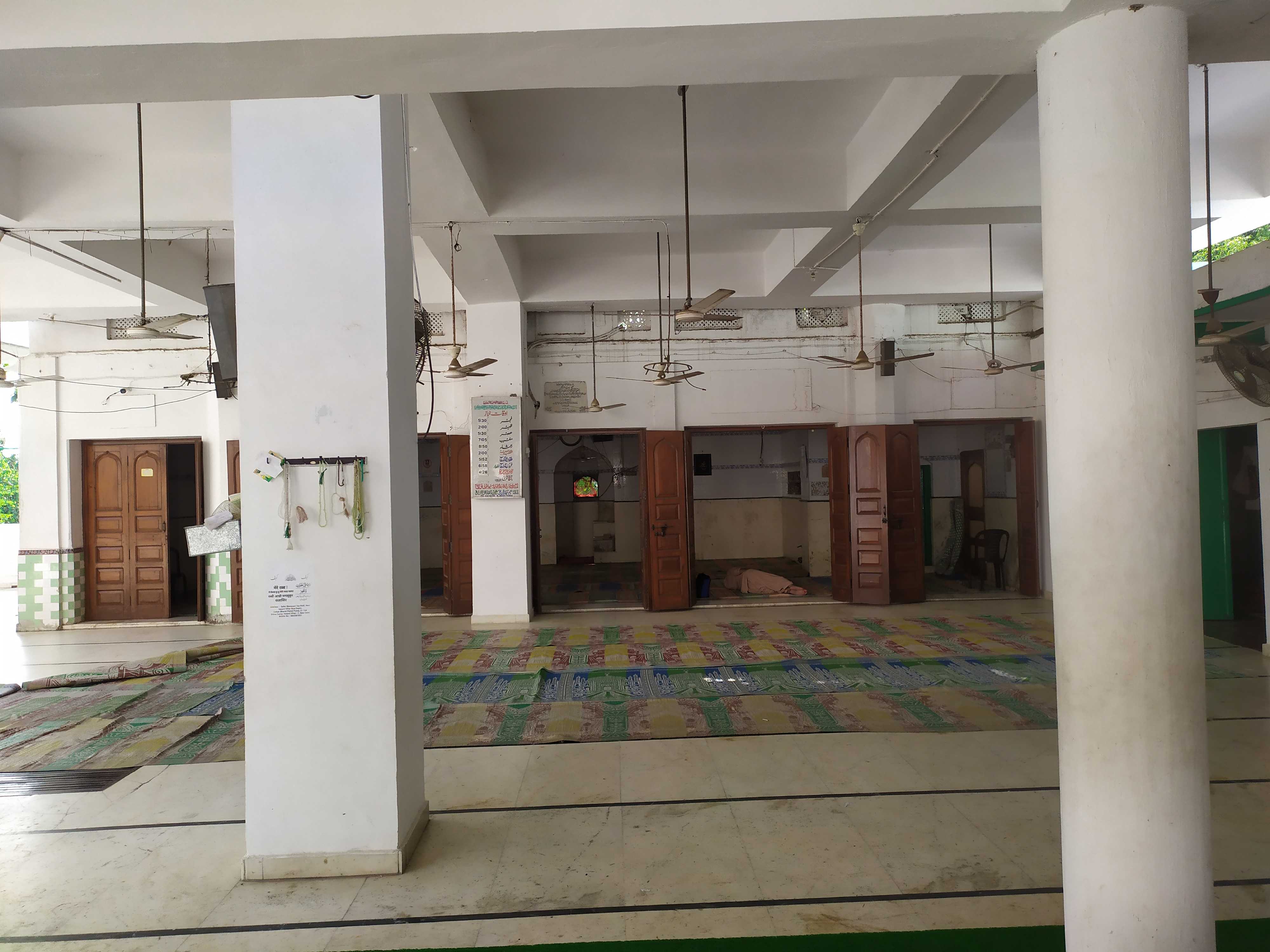
In the heart of Mehrauli, Delhi, stands the Auliya Masjid, a testament to centuries of spiritual devotion and architectural evolution. This monumental mosque is steeped in the rich tapestry of Sufi tradition, its very stones echoing with the prayers of saints and devotees alike. Legend speaks of a momentous gathering at this site. Three revered Sufi saints — Khawaja Muinuddin Chisti (Khawaja Gharib Nawaz), Qutub Sahib (Khawaja Qutub-ud-Din Bakhtiyar), and Baba Fareed Gani Shakkar — once united here in prayer, facing the Shamsi Talab and Mecca beyond. This spiritual lineage, unbroken to this day, is commemorated within the masjid's interior, with carefully marked places of prayer for each saint. The mosque's entrance, a multi-foliated arched gateway, invites worshippers into a space where history and faith intertwine. At its heart lies a rectangular courtyard with a coffered slab, semi-open to allow natural light to filter through, creating an atmosphere of serene contemplation. The western Qibla wall, housing a single mihrab recess at its center, stands approximately 1.8 meters high — a remnant of the old mosque, possibly dating back to Iltutmish's reign. While the original structure has vanished over time, its essence lives on in this enduring feature. Time has left its mark on the Auliya Masjid, with observable changes hinting at later modifications. Yet, these alterations only add to the rich historical narrative of the site, each stone telling a story of devotion and architectural evolution. Today, the Auliya Masjid continues to fulfill its sacred purpose. It serves as both a house of worship for Mehrauli's Muslim community and a pilgrimage site for those seeking spiritual renewal. The legacy of the three saints lives on not only here but also in their respective dargahs in Ajmer, Delhi (Mehrauli), and Pakpattan (Pakistan) — a testament to the enduring power of their spiritual teachings. As it has for centuries, the Auliya Masjid stands as a beacon of faith, a bridge between past and present, and a living monument to the enduring legacy of Sufi spirituality in the Indian subcontinent.